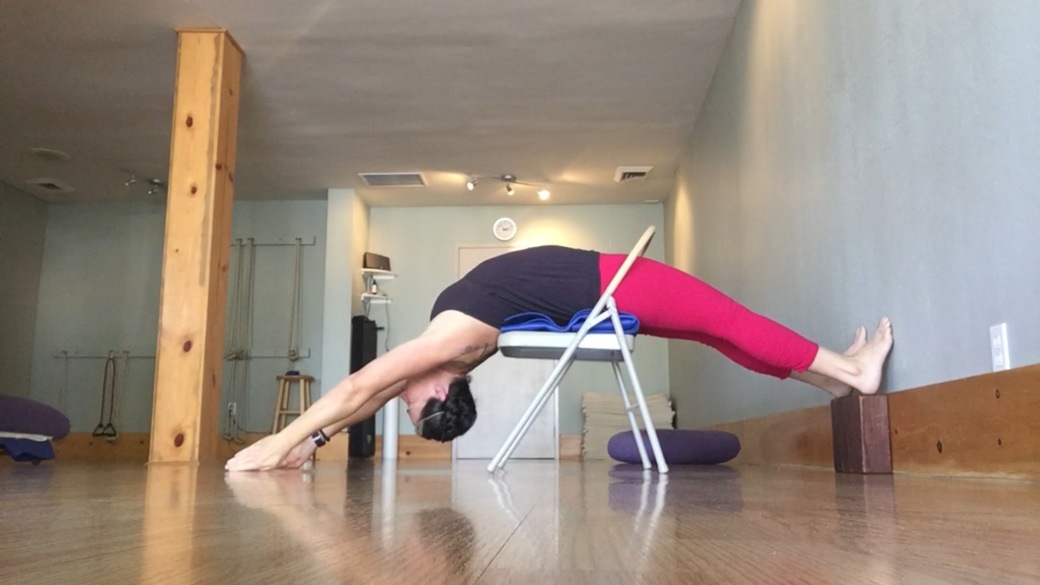 Next weekend is the last meeting of the three-year Iyengar Yoga Therapeutics Teacher Training course I’ve been attending, and I’ve already applied to continue for the next year-long session. These weekend workshops with a group of senior Iyengar teachers – Manouso Manos, Marla Apt, Carolyn Belko, Gloria Goldberg, Garth McLean, and Lisa Walford – have been a great resource for me in my work with my own students.
Next weekend is the last meeting of the three-year Iyengar Yoga Therapeutics Teacher Training course I’ve been attending, and I’ve already applied to continue for the next year-long session. These weekend workshops with a group of senior Iyengar teachers – Manouso Manos, Marla Apt, Carolyn Belko, Gloria Goldberg, Garth McLean, and Lisa Walford – have been a great resource for me in my work with my own students.
In addition to deepening our own practice and our powers of observation with each other, we get to watch and participate in the development of therapeutic sequences in real time with therapeutic students. This has covered a wide range of issues, some of which I work on with my own students, like Multiple Sclerosis, Parkinson’s, and scoliosis. We’ve also covered emotional issues like grief and anxiety. Sometimes we assist, other times we practice the poses alongside the therapeutic students to feel the effects in our own bodies, and we also practice the adjustments and props with each other.
One of the most interesting things I’ve observed about the development of an individual therapeutic sequence is how much the personality and experience of the student determines the approach of the teacher. For our therapeutic students we’ve had everything from seasoned long-time practitioners and teachers, to those with only a few months of yoga practice. So one issue with that is trust – trust in the teacher and trust in yoga. Someone who has long experience with their yoga practice and trust in their teacher will be able to attempt more complicated and challenging poses than a newcomer to the practice. Someone who has never met the teacher before needs time to establish a trusting relationship with them, so less challenging poses that give immediate relief are more appropriate.
Then there is the overall personality of the student, whether they are someone who likes to be challenged and work hard or someone who needs to take it slow and ease into things. This is where sequencing is important not just for the physical effects of the poses but also the emotional effects. Someone who has had an active, vigorous exercise regimen and is now ill or injured still needs to feel like they are working hard on their recovery even in supported poses. These people may need to have their minds engaged on the doing of the pose in order to quiet the mind. On the other hand someone who has had many illnesses or injuries over many years may find even the simplest of new movements intimidating, so small, gentle steps may be needed to develop trust in the teacher and the yoga.
All this may sound obvious, but the genius of this therapeutic course is that we get to observe Manouso take in these therapeutic students: listening to their descriptions of their issues, watching him work with each one individually, and then hearing him explain what he observed and why he approached each student in the way he did, both physically and emotionally. It is this reflection that deepens my understanding of how to approach a therapeutic student to help them best. Looking back on the cues in how each student presented their issues, what they focused on, what they may have left out and revealed later, how they responded to the first few poses vs. how they were near the end of the session. It is training and exercising my powers of observation.
I am looking forward to another weekend with this amazing group of teachers, and I hope another year of studying with them.
